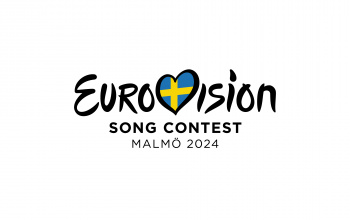
This year’s Eurovision Song Contest was broadcast as 1080 25pSF (the broadcast compatible version of 25p). It caused much controversy with non-technical viewers commenting something “didn’t feel quite right”, and amongst technical viewers who didn’t understand why the show being in 25pSF was such an issue given it’s a common format used in broadcast.
I’ll try and explain why I feel this is the case, but first let’s have a brief primer on how we view the world and how both television and film trick our eyes into seeing movement that isn't actually there.
When you wave a sparkler around in the dark, you see the trail of light it leaves behind even though the sparkler has moved. Your eyes and brain hold onto what they’ve seen for just a moment before letting go. This effect is called Persistence of Vision, and it's relied upon to create the illusion of movement from a sequence of still images - the way film and TV is shown.
Historically it was discovered that showing 24 individual frames, each shown to our eyes twice each second, was a good compromise between tricking our eyes and brain into joining the sequence of photographs into a continuous moving image, and the physical cost and amount of film required to shoot a scene.
Yes, 24 frames per second was a decision based mainly on cost! Yet it is a standard that despite the flexibility of the digital world, has stuck? Why is this? I’ll explore that in a bit but it's more than just a technical format.
Television opted for 50 “frames” a second but to make it more efficient for capture and transmission it split that image into fields so you’d get half the image in the first field, and then the rest of the image in the second field. This technique is called Interlacing and has the benefit that any movement between fields is also captured, making the motion look more smooth when compared to film.
If you've glazed over at the technical description, no worries. We can summarise by dealing with just the movement - A film can show a difference in movement 24 times every second, whereas television can show a difference in movement 50 times a second.
When watching a film the viewer has to ignore the reality that they are viewing a staged performance and temporarily accept it as their reality in order to be entertained. This frame rate actually provides that suspension of disbelief at a deeper level within the brain.
Filmmakers experimented with higher frame rates and movie-goers disliked it because it didn’t allow them to suspend their disbelief in the same way. That’s why film is still 24 frames per second despite the technical advances the digital world has bought us.
This week I worked on a fake TV show for an upcoming feature film, and we had to set our entire studio equipment to capture in 24 frames rather than the usual 50 fields. Looking at the live output of the cameras whilst knowing that the acting happening on the studio floor was occurring in real time, my brain immediately interpreted it as film and it simply didn’t feel live when viewing it on the screen. The frame rate had provided suspension of disbelief - or in this case the reverse happened, suspension of belief!
Tonight’s Eurovision applied the “filmic” effect to the entire show output which reduced the effective motion frame rate to half the normal value, 25 frames per second which is near enough to the film standard of 24 fps. In previous years they have only applied it to the edited “postcard” clips shown before an act. The filmic look effectively duplicates the two fields so you retain the picture quality but you lose the movement data. It looks like film.
Why is this a problem? Surely the filmic effect is a great tool for producers who want to create a dramatic feel to a production? It seems that when frame rate is applied to something that IS believable, something we know is actually happening, it creates a conflict in our mind. The filmic look is suspending our disbelief but our mind knows what we are viewing is actually happening.
It's worth noting that Sport is never broadcast in “filmic” mode for this reason. The psychological effect is so great it actually removes the feeling of immersion in the match or game.
When I worked in News I used to argue that packages should not be broadcast with the filmic look as it detached the belief from the story being told.
Tonight’s Eurovision lacked a live feel as a result of the filmic look applied. Many of the music performances, whilst impressive, simply didn’t feel live or real because of the artificial drama filter. It detracted from the fantastic staging and effects. As one viewer said “it’s difficult to tell when the recorded clips stop and the music performance starts”.
So, this debate isn’t actually a technical one, it’s the psychology of how we view things, how our persistence of vision works, and how our brains subliminally reject something that just doesn’t seem right. Adding an artistic effect has consequences on how that art is consumed, or worse, rejected, which runs deeper than a producer’s desire of wanting it to look "dramatic”.
Did this page help you?
There's no obligation, I've provided this article for free.
But if you saved time, money or frustration as a result of this article, or you just enjoyed reading it, perhaps you might like to